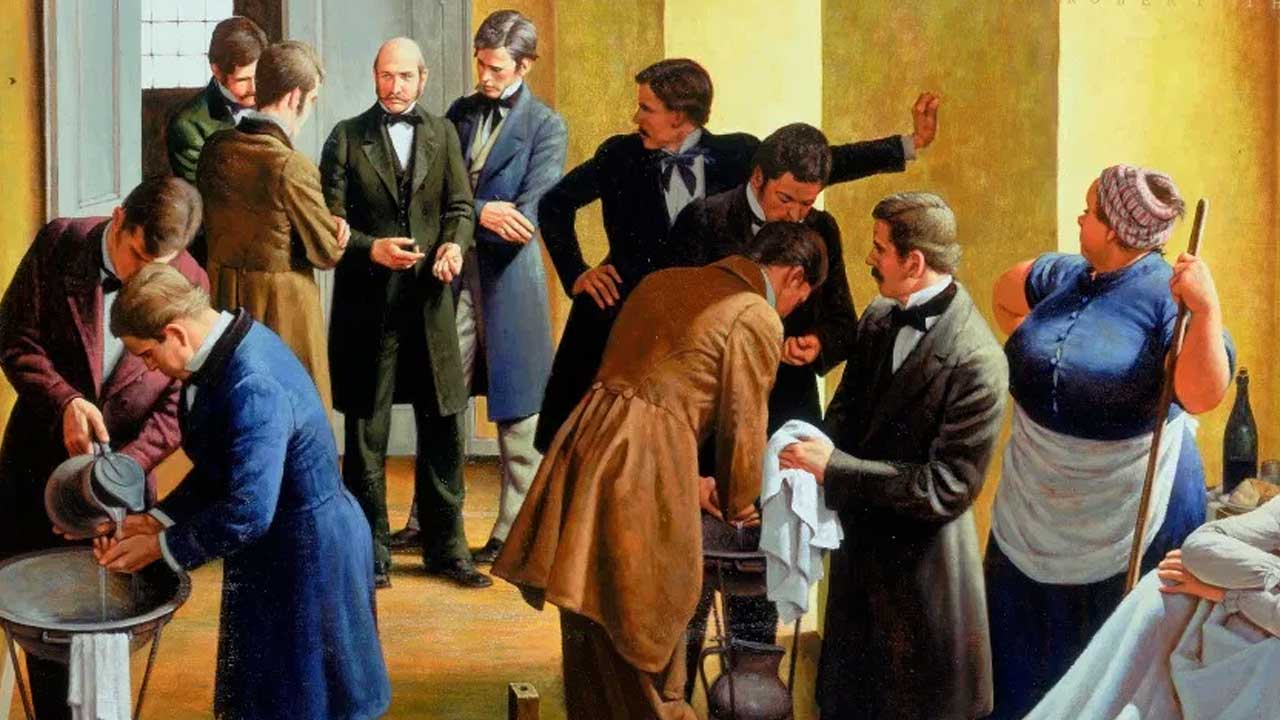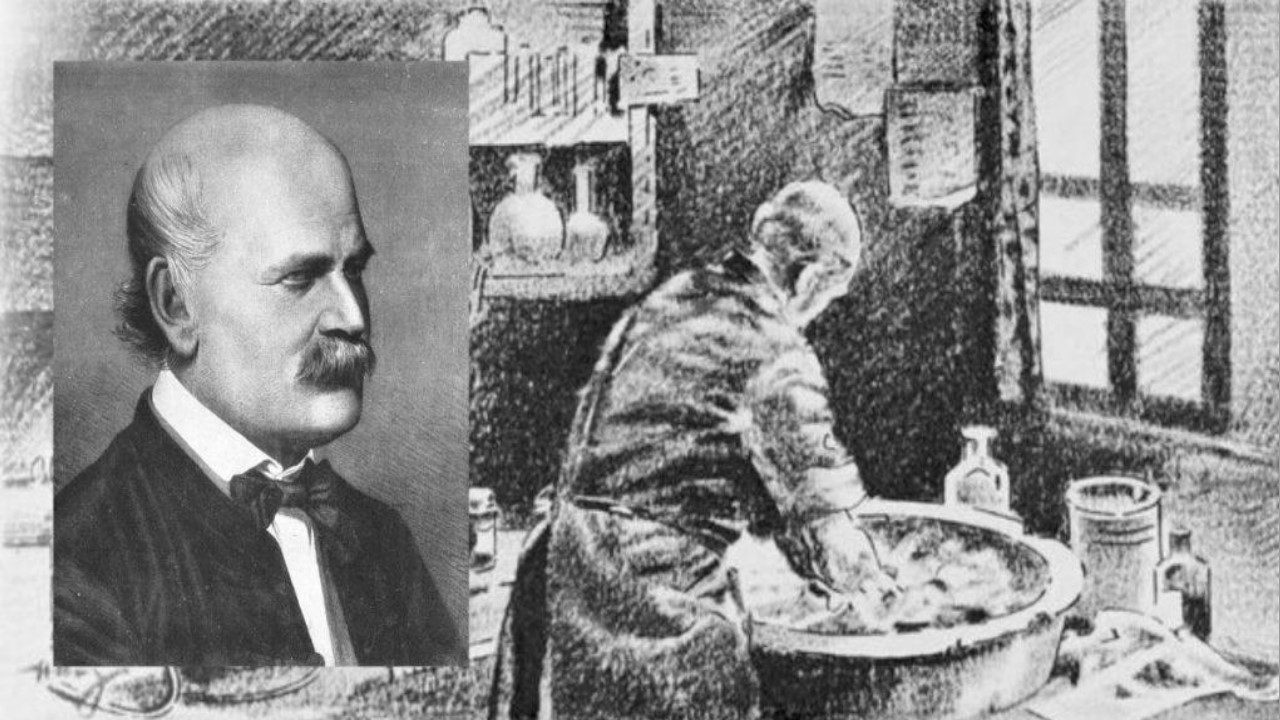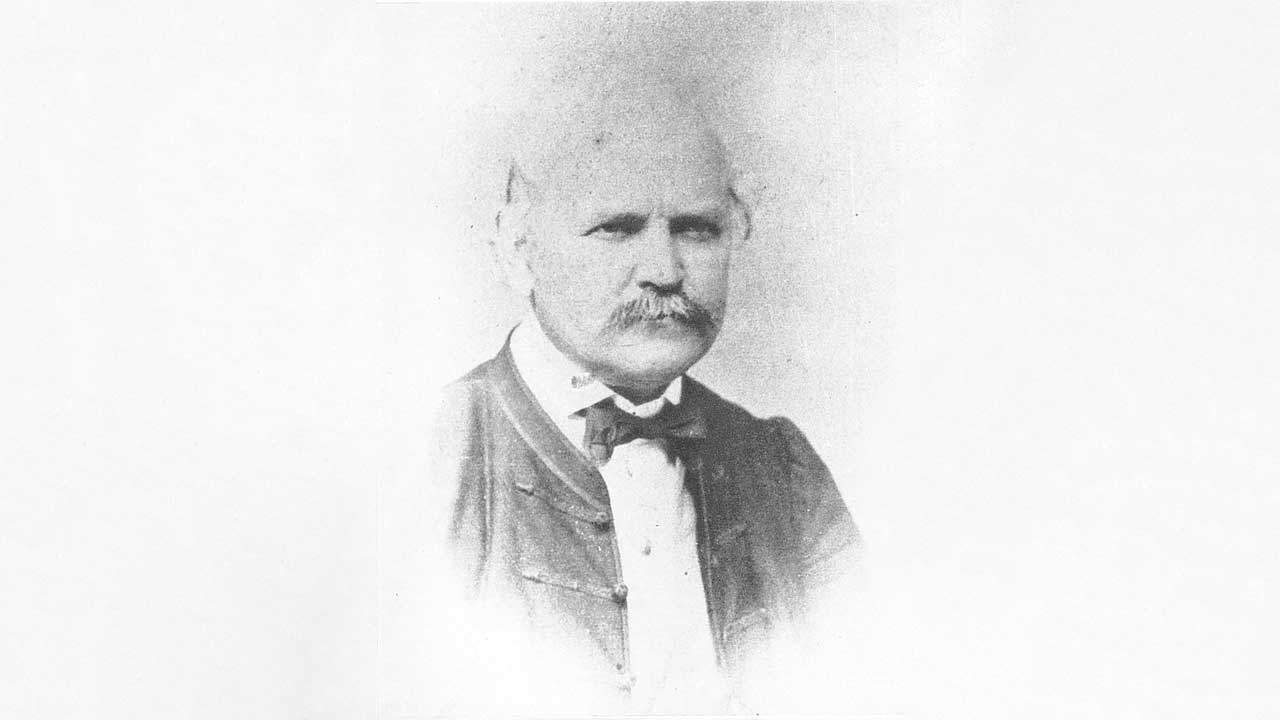We go into the details of the life of Ignaz Semmelweis, who tried hard to draw attention to the importance of hand washing, a life-saving habit, but could not make him listen.
How many times do you wash your hands a day? This amount has probably increased considerably since the outbreak of the COVID-19 pandemic. Even if there is no pandemic, we already live in a society where hygiene, especially hand hygiene, is a cultural standard. So, when and by whom was the importance of hand washing first understood in history?
There are probably many different answers to this, but the name we’re going to look at today with its story Ignaz Semmelweis.
Being an obstetrician in the 1800s and keeping children alive… Who is Ignaz Semmelweis?
by full name Ignaz Philipp Semmelweisan Austro-Hungarian scientist and was a doctor. Born in 1818, Semmelweis’ family originated in Germany. Semmelweis, who started to study law at the University of Vienna in the autumn of 1837, transferred to medicine the following year for reasons we do not know today. Fortunately, he did… Our hero, who started his career as a doctor in 1844, couldn’t find an internship opportunity as an internist, so he decided to specialize in obstetrics. Glad he gave…
Semmelweis at the Vienna General Hospital in 1846. in obstetrics clinic He started his career as an assistant. His duties were to examine patients every morning, supervise difficult births, train students in the department, and jot down records.
At that time, maternity facilities were set up all over Europe to deal with the crime of killing illegitimate babies. These organizations, which provided completely free services, ensured the protection of babies. In return for free services, mothers, training of doctors and midwives were used as test subjects.
At that time, the hospital had two maternity clinics. In one of the clinics, the maternal mortality rate during childbirth was around 10 percent;

In the other clinic, it is around 4 percent… This situation was known outside the hospital. The two clinics were accepting delivery on different days, but women who gave birth clinic with low mortality He was begging to be accepted. The situation was so dire that the women were on their knees begging not to be admitted to the first clinic.
Some women even started giving birth on the streets as if they were supposed to give birth suddenly on the way to the hospital! Even if they gave birth on the street, they could benefit from babysitting services afterwards. We said at the beginning that one of Semmelweis’s duties was to keep records. Analyzing the data, Semmelweis found that among women who gave birth on the street puerperal fever (albastı) He noticed that he was rarely seen.
He developed a scientific approach to superstition, but this too had its punishment:

In Semmelweis’s time, doctors and medical professionals were freed from superstitions such as attributing diseases to evil spirits and the devil. possible medical causes was focused. It was also during this period that autopsies became widespread and doctors became interested in data-driven work. Working with these principles, Ignaz Semmelweis, a modern doctor in his lifetime, wanted to know why puerperal fever was more common in some deliveries (especially those in the hospital).
He started observations in both clinics of the hospital where he worked to go into the details of the events. All male doctors and medical students working in one of the clinics; in the other, they were completely midwives. Semmelweis, who examined mortality rates in both clinics, higher mortality rates in clinics with male doctors and medical students noted that.
He made a discovery that would save the lives of mothers giving birth:

The biggest difference between the two clinics; In the clinic where midwives work, expectant mothers slept on their sides; in the other, they gave birth on their back. However, as a result of the studies, the effect of these two different methods on puerperal fever was not observed. When someone died from puerperal fever, the priest would come to the clinic and ring the bell next to that person’s bed. Semmelweis, the priest’s practice has just given birth frightening other womenthought that it caused their fevers, made them sick, and eventually killed them. Sounds a bit irrelevant doesn’t it? Already so…
When he asked the priest to practice without ringing the bell, Semmelweis saw that his theory was wrong. When he couldn’t get out of the job, he got away from the hospital a little and went to Venice. He wanted to rest his head and taste the relaxing effect of art. When he returned to the hospital, some people were waiting for Semmelweis. important and sad news there was. In his absence, one of his colleagues, a pathologist, fell ill and died.
Moreover, this condition was quite common among pathologists. Semmelweis’ colleague also fell ill and died from a needle prick during the autopsy of a woman who died of puerperal fever. Thus, Semmelweis understood that puerperal fever did not only kill women who gave birth, but could also infect and kill hospital workers. Your pathologist Semmelweis that he died after showing the same symptoms as the autopsy he noticed. Although he understood this, the first question in Semmelweis’s mind was “Why is the death rate in the clinic where male doctors work higher than in the clinic where midwives work?” still not answered.
After the deaths, the hygiene rules that the doctors applied incorrectly came out… However, those who spoke the truth were expelled from nine villages:

Considering the other difference between the two clinics, Semmelweis said that doctors performed autopsies in the clinic; found that midwives did not. Semmelweiss, autopsy that the doctors who touched the cadavers during the treatment carried the small particles to the mothers they gave birth to; realized that they caused women to become ill and die.
To see if his hypothesis is correct, employees should not just wash their hands with soap after the autopsy. with chlorine solution He asked them to wash it. As we all know today, chlorine is one of the strongest disinfectants. But Semmelweis knew nothing about microbes when he made this decision. He chose chlorine because he thought chlorine was the best way to remove the odor left by cadaver particles.
After this application, it was seen that the rates of puerperal fever decreased drastically. What Semmelweis discovered was a fact whose importance is much better understood in today’s world, especially with the epidemic. Handwashing is one of the most powerful weapons in the public health effort. Well, one thinks that when Semmelweis solved the problem, everyone took a sigh of relief and rejoiced like crazy, but you know that they expel the truth-teller from nine villages…
First of all, Semmelweis’s hypothesis made it appear as if the autopsy doctors had infected the expectant mothers with postpartum fever and caused their death. Just think, what a plague… And Semmelweis was a little impulsive. He made some enemies because he directly confronted those who did not agree with his opinion. After a while, the doctors did as Semmelweis said. he stopped washing his hands with chlorine and Semmelweis lost his job.
He lost his mental health and went to a mental hospital… He died due to the disease he was trying to solve:

Semmelweis followed up with doctors in other parts of Europe. tried to persuade him to wash his hands with chlorine but still no one listened. As the years passed, Semmelweis began to lose patience and become increasingly awkward. Even a syphilis-induced to mental illness He is said to have even been caught. Unfortunately, in 1865, at the age of 47, Ignaz Semmelweis had to be admitted to a mental hospital…
One of the saddest parts of the story is that Semmelweis was possibly abused in the hospital and blood poisoning basically, what caused Semmelweis’s death is the same disease that our hero fought for to prevent the death of mothers from puerperal fever.
Before we end our news, let’s make a short film suggestion for the person concerned. The Polish short film Semmelweis, released in 2001, deals with the tragic story of Ignaz Semmelweis. We can’t thank enough Ignaz Semmelweis for giving us the importance of hand washing, which is especially vital in 2021.
